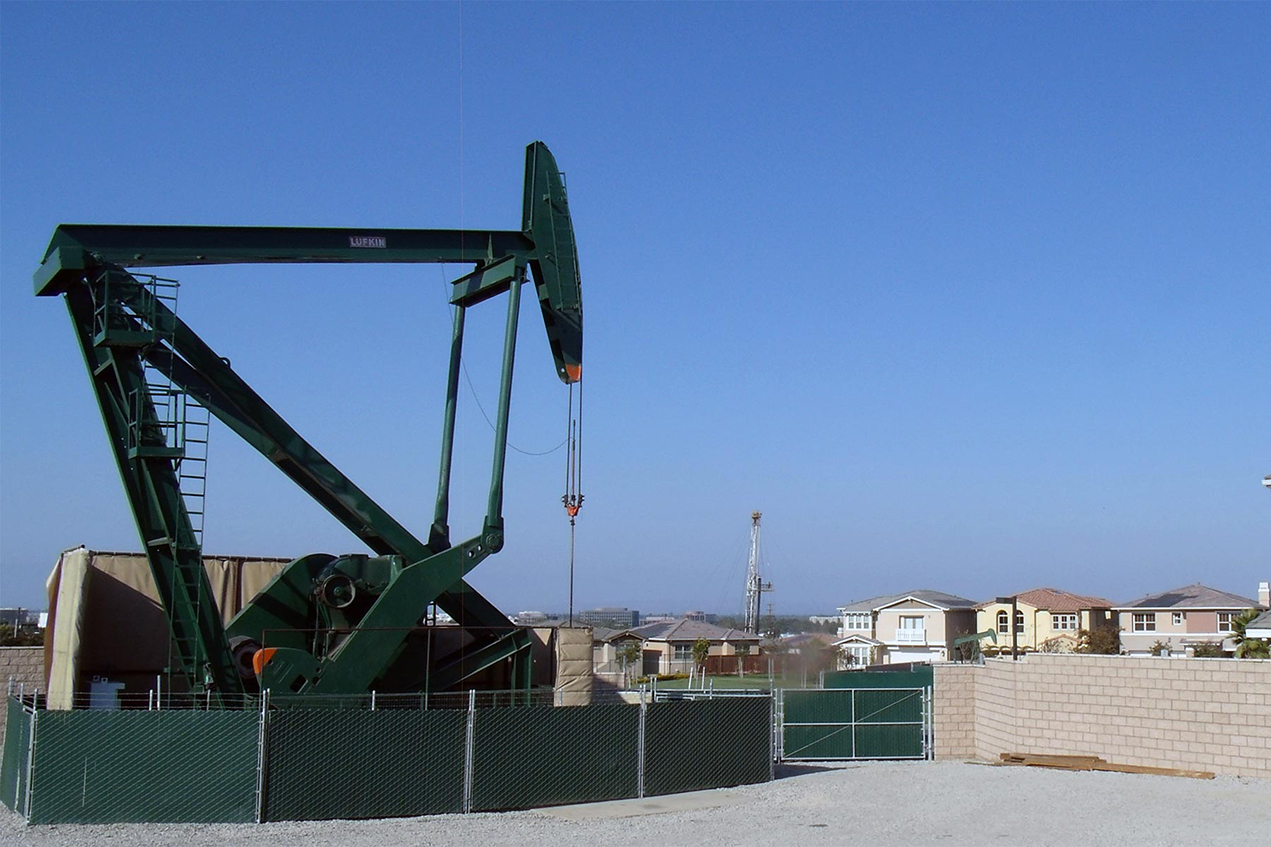A new USC study links living by urban oil wells with wheezing and reduced lung function, symptoms disproportionately borne by people of color in Los Angeles.
In some cases, the respiratory harm rivals that of daily exposure to secondhand tobacco smoke or living beside highways spewing auto exhaust, researchers say.
The study, recently published in the journal Environmental Research, focuses on drilling sites in two South L.A. neighborhoods, Jefferson Park and North University Park, yet could have implications elsewhere in the region. Approximately one-third of L.A. County residents live less than 1 mile from an active drilling site — and some live as close as 60 feet.
“Oil and gas extraction occurs in densely populated neighborhoods next to where residents live and go to school. In this community-driven research, we found that living close to oil sites is associated with lower lung function,” said researcher Jill Johnston, an assistant professor of preventive medicine at the Keck School of Medicine of USC. “These results persist across ages, sex and racial/ethnic groups.”
Los Angeles is home to the largest urban oil field in the country, with thousands of active wells extracting crude and natural gas near homes, schools and parks. Some pumpjacks operate out in the open while others are hidden inside structures that blend into the urban landscape. A Los Angeles Times investigation last year found that the city is dotted with 1,000 abandoned wells that continue to expose people to toxic gases. Even tony neighborhoods like Beverly Hills and beach communities still harbor oil wells.
Active and idle wells emit hazardous air pollutants like benzene, hydrogen sulfide, particulate matter, black carbon and formaldehyde, many of which are known respiratory irritants.
USC study investigates South L.A. neighborhoods near active, inactive wells
To learn more about the potential health impacts of living near oil wells, Johnston and her colleagues partnered with Esperanza Community Housing, a social justice nonprofit group, to train community health workers in recruitment and research methods.
They focused on the two neighborhoods atop the Las Cienegas oil field in South L.A., a densely populated area inhabited by many low-income Black and Latinx families. The North University Park drilling site is idle and the Jefferson Park site is active.
Between January 2017 and August 2019, researchers surveyed 961 residents from 488 distinct addresses within 1,000 meters of a drilling site. On average, participants had lived in their neighborhood for 19 years. All identified as people of color, including 792 as Hispanic/Latinx, 115 as Black and 54 as Asian.
Researchers collected self-reported acute health symptoms and assessed lung function using spirometry, which measures how much air you can breathe in and out of your lungs as well as how easily and fast you can blow the air out of your lungs. Reduced lung function has been associated with increased risk of mortality, including coronary artery disease and respiratory disease.
Living near urban oil wells associated with worse lung health
Participants living near the active drilling site in Jefferson Park reported significantly more wheezing, sore throat, dizziness and eye or nose irritation in the previous two weeks, compared with their counterparts living near the idle wells.
Among the 747 valid spirometry tests, participants living less than 200 meters away from oil operations had reduced lung function compared with residents living more than 200 meters away, after adjusting for age, sex, height, proximity to freeways, asthma status and smoking status.
On average, people in the study had normal lung function; men inhaled and exhaled an average 3.6 liters of air in spirometry tests, women 2.8 liters. But, on average, residents living less than 200 meters away from oil operations measured .128 liters lower — about a half cup. Those living downwind and nearby fared even worse, measuring .296 liters lower, about a cup and a quarter after adjusting for other factors.
This overall reduction observed in lung function in residents closest to the oil extraction sites was greater than what national studies have shown about the negative impacts of environmental tobacco smoke and living next to busy roadways, Johnston said.
Residents living downwind and close to the idle wells also showed lower lung function, potentially from ongoing leaks at the site or lasting effects from when the well was active. The North University Park drilling site was voluntarily shut down in late 2013 due to community complaints and failing equipment.
“These impacts raise environmental justice concerns about the effects of urban oil drilling,” Johnston said. “Reducing emissions, increasing the distance between oil operations and residents, and investments in renewable energy and energy efficiency measures that reduce reliance on fossil fuels overall could protect the lung health of residents near oil wells.”
In addition to Johnston, other authors on the study include Temuulen Enebish and Sandrah Eckel of the Keck School of Medicine; Sandy Navarro of L.A. Grit Media; and Bhavna Shamasunder of Occidental College.
The research was supported by grant No. ES027695 from the National Institute of Environmental Health Sciences.
— Leigh Hopper



